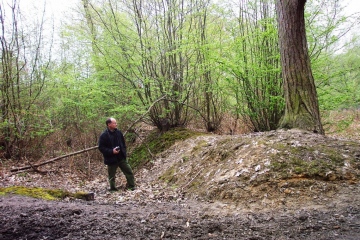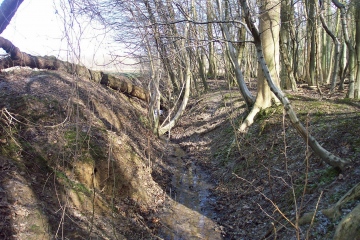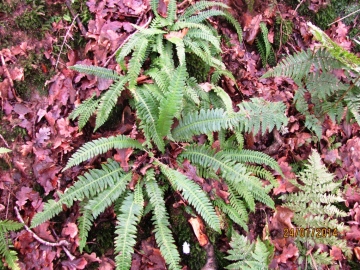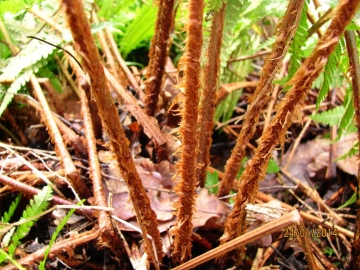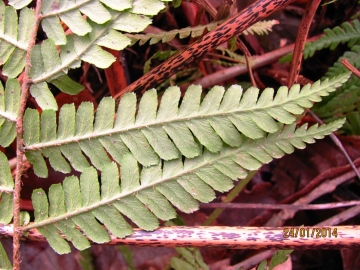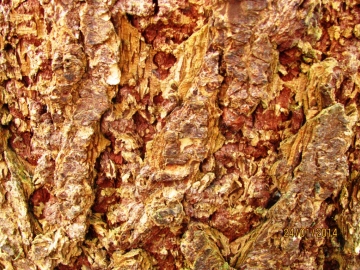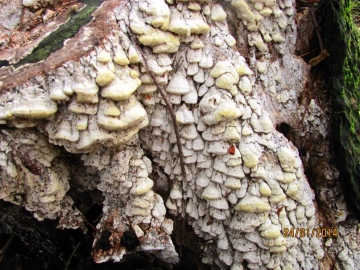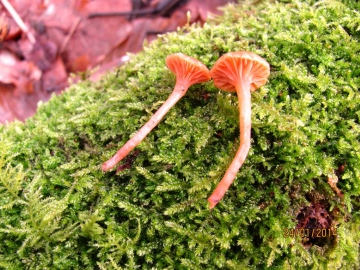Wood-banks lend themselves to reflective thoughts. The longest, straightest and mightiest of those that enclose the ancient coppice in Stoneymore is the medieval bank that still forms part of the parish boundary with Highwood. When first constructed it, along with the other banks in the wood, may have been topped with a dead hedge of brash and its ditches periodically cleared of leaves and fallen branches but its original purpose, which was both to define ownership and keep grazing animals (particularly deer and Commoner’s sheep and pigs) from the young coppice within, have long been obscured by neglect.
Most people coming across them nowadays would be likely to assume that they are natural features rather than the work of man. Built by men they certainly were but what kind of men? What were they like, those medieval woodsmen who struggled with mattock and shovel to create these once mighty banks? Were they freemen or villeins? Paid for their services by the Lord of the Manor or paying off a debt to him with their toil? What did they think about? Talk about? What were their hopes and fears? At times there seems to be an unbridgeable gap between their age and ours. Ian Mortimer, writing in “The Time Traveller’s Guide to Medieval England†opens his chapter on “The Medieval Character†with a horrendous story about Sir John Arundel – younger brother of the Earl of Arundel – that involves the violent abduction of a group of nuns who, later, are callously dumped overboard when his ship, bound for France, looks like foundering in a gale. He goes on to portray a society where men and women were more “fearful, guarded and violent†than the one with which we are nowadays familiar. It is a world where people have few qualms about inflicting pain on children and animals and where blood sports – Cock Fighting, bull and bear-baiting - are sure to draw a crowd – while the medieval sense of humour revels in the humiliation and misfortune of others. Superstition is rife. Anything is possible. Iron can be turned into gold and Hobgoblins inhabit the woods. It is a frightening age indeed.
I’m not sure though that the 14th century has much to teach the 20th about barbarism, more likely the reverse.. And as for cruelty to children and animals, or revelling in the misfortune of others, they are, if not habitual, still commonplace in our society. With regards to superstition, most of us, even today, have a wonderful ability to believe in what we want to believe from time to time, irrespective of the facts, so it is hardly surprising that our medieval forebears believed what they did when they only had their imaginations to guide them. They may have believed that there were Hobgoblins in the wood but, then, only last week a district councillor in the Midlands was sacked for claiming that the recent floods were linked to the legalisation of gay marriage! Human nature doesn’t change that much, would that it did! Its more positive aspects may occasionally come to the fore, depending on the age and society In which we live, but the 14th century is never far below the surface.
As I sat on the bank today, coffee cup to hand, viewing those medieval workmen from my elevated vantage point of 600 years, I could at least make a brief nod of recognition in their direction. Doubtless some worked hard while others were loafers; some were garrulous, others taciturn - either ready with a smile or never far from a scowl; some, upon raising their eyes to gaze at the latticework of branches against the sky, were content; others, frustrated by what they saw as the harshness of their existence, gazed at the sky with indifference, hostility even. They probably laughed, swore, larked around, argued, discussed village politics, gossiped and swapped crude jokes. And is it too much of a whimsy to suggest that like the English working class to this day they probably moaned endlessly about both their work and the weather!
Were those medieval woodsmen to return to Stoneymore today it would, perhaps, give them pleasure to find that their workmanship had survived for six hundred years but they would undoubtedly be shocked at the condition of the coppice their labours had been designed to protect. It fills me with sadness too. When “Skip†Seymour, my headmaster at Ingatestone Boys’ School in the 1950s, led us pupils on our weekly “nature walk†to Mill Green the wood was full of the song of Nightingales; over thirty pairs he once told me. A dozen pairs remained a few years later, during my bird-nesting youth, and ten or more in the 1970s when my nest finding talents were put to more constructive use on behalf of the BTO’s Nest Record Scheme. Today it is possible to gaze for hundreds of yards through the trees with nary a bramble leaf or blade of bracken to interrupt the view. Nightingales have not bred there for many years, their song slowly fading as the undergrowth in which they nested disappeared.
Still, the resumption of commercial coppicing during the past three winters gives hope for the future and, derelict or not, there is still much to enjoy, even in mid-winter. Hard Fern, like these pictured here, have established their only parish site on the wood’s medieval banks, while in damper areas nearby the winter green leaves of Scaly Male Fern catch the eye; the pale centred ginger scales that encrust the stem and the lack of serrations along the margins to the leaf pinnules distinguishing it from its commoner cousin.
There is beauty too in the bark of the Douglas Fir – the survivors of another period in the Wood’s history – whose canopies, far above, now top those of the surrounding oaks when viewed from afar.
A surprising number of fungi have survived the few frosts this winter – Buttercap, Wood Blewits, Glistening Inkcap, Common Bonnet and Peeling Oysterling. The family Postia is not one to set the pulse racing, most species forming spongy white (occasionally blue tinted) blobs on dead wood but the one pictured here, Postia leucomalella, found covering a rotting Larch stump, cuts a prettier picture, many of the brackets tinted with a delicate buttermilk yellow. Nearby, a common winter species, the Scurfy Twiglet, seemed to be flourishing on an old bonfire site on one of the wood-banks and I hardly gave it a second glance until I noticed the deeply decurrent gills. It proved to be Omphalina pyxidata, otherwise known as the Bonfire Navel, the ‘navel’ being the button-like depression in the centre of the cap.
As I paused for a final cup of coffee before returning home a male Tawny Owl roosting in a Scots Pine close by let out his tremulous territorial call, a challenge that met with an immediate response from a rival male on the far side of the wood. For the next ten minutes each tried to out-hoot the other and then their mates joined in, exchanging a sharp “kew-wik†with their rival’s spouse, a swapping of pleasantries that continued as I left the wood and plodded home along the road.



















